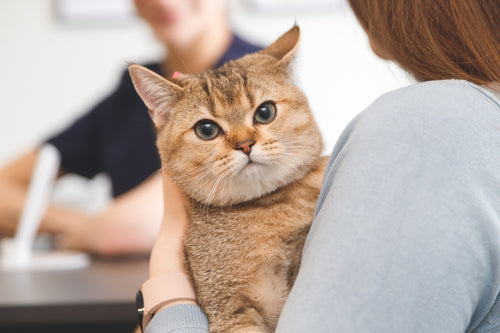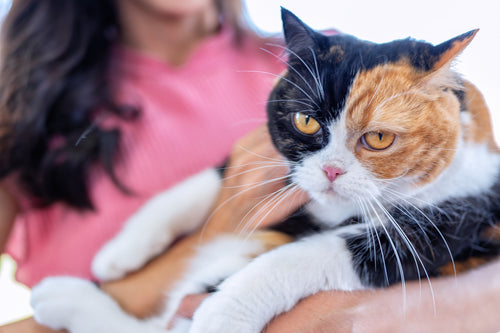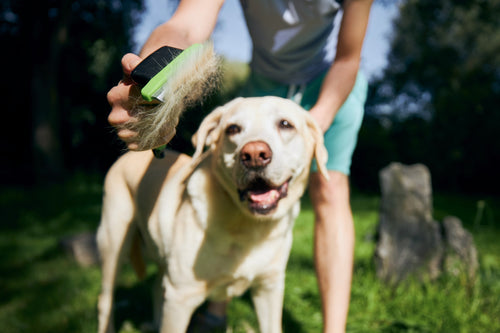More than half of all dogs in the United States are overweight, with those numbers continuing to rise. With numbers like that, there’s a good chance your pup could be packing on some extra pounds.
Dog obesity can be caused by a few different factors: underlying health issues, genetics, or simply by living a less-than-healthy lifestyle. As much as we wish it weren’t the case, gaining weight is pretty easy for humans and dogs alike—all it takes is consuming more calories than are being burnt on a regular basis.
Is your dog overweight? Keep reading for some helpful tips on how to tell, along with some recommendations for keeping your dog at a healthy weight.
Dog Obesity: Why It’s Dangerous for Your Dog
We’re all about body positivity, but we also understand the importance of keeping our pets as healthy as possible. We know that our dogs are adorable no matter how much they weigh, but extra weight can pose some serious health concerns.
For example, dog obesity can contribute to:
- A weakened immune system, making your dog more susceptible to health issues
- High blood pressure
- Skin problems
- Breathing difficulties
- Joint and mobility issues
Plus, being overweight can decrease your dog’s lifespan—and nobody wants that. Ultimately, a portly pup isn’t going to be able to live his life to the fullest, no matter how unconditional your love for him may be.
How to Tell if Your Dog is Overweight
When it comes to dogs and weight, a simple number on the scale isn’t going to give us all of the information that we need. After all, the ideal body weight for your dog can vary depending on a few factors, such as size and breed. Your vet will be able to tell you the ideal weight for your dog’s size and breed.
A dog who weighs 10-20% above his ideal body weight is considered overweight. If he weighs more than 20% above that ideal body weight, he’s considered obese.
Your pet is perfect in your eyes, so you may not even notice if your dog is looking a bit… husky. If you’re unsure whether your dog is overweight or even obese, try the following:
Standard Rib Test
Check to see if you can easily feel your dog’s ribs by gently placing your hands at his side. You should be able to feel his ribs without needing to press hard. If you can’t, there’s probably some excess fat getting in the way.
Look From Above
When you look at your dog from above, you should see a defined waist. If his silhouette is looking more like a blimp than an hourglass, it may be time for a weight loss plan.
Look From the Side
When you look at your side from the side, you’ll want to see an upward-sloping tummy area. If it sags or swings down lower than the chest, your dog may be overweight.
Check for Fat Pads
During petting sessions or home health checks, look for any areas on your dog that are especially wiggly or waddle when he walks—typically between the legs or at the top of the hips.
Monitor Your Dog’s Behavior
Pay attention to any changes in your dog’s behavior, too. Does he have trouble moving around, or is he reluctant to jump up onto the couch? If he’s overweight, he may be especially lethargic and inactive… though he may spend a lot of time eating!

Tips for Keeping Your Dog at a Healthy Weight
Fortunately, there are several ways to help your dog lose weight, or even just maintain his healthy weight.
For example:
Diet
Regardless of your dog’s weight, he should always be eating a well-balanced, nutrient-rich diet. If he needs to shed some pounds, don’t just decrease the amount of food you’re feeding, as this could result in nutritional deficiencies. Instead, talk to your vet about the best diet for your dog—typically something high in fiber and low in calories.
If your dog tends to eat too fast (or too much), consider switching to a puzzle feeder to slow him down. Opt for scheduled mealtimes too, rather than an all-day buffet.
Your dog may not love this one, but treats should make up no more than 10% of his daily calorie intake. To avoid overdoing it with treats, offer rewards in the form of praise and cuddles instead, and/or switch to healthier alternatives such as carrots or dried sweet potatoes.
Exercise
The amount of exercise your dog needs each day will vary depending on his breed, size, age, and energy level. That said, it’s important to get outside every day for 1-2 daily walks, or at least designate some time for running around in the yard.
Feel free to switch it up, too. Spend some time playing fetch together, running through an agility course, or working on some new tricks.
For dogs with joint issues, try some low-impact exercises such as swimming or nose work.
Regular Vet Visits
No matter how diligent you are as a pet parent, there’s no replacement for regular vet visits. In addition to keeping your dog’s weight in check, your vet will be able to rule out any medical issues that could be contributing to weight gain.
Get personalized information for your pup by asking the following questions:
- Is my dog at a healthy weight?
- How many calories should my dog be eating daily?
- How much weight should my dog be losing each month?
- What kind of exercise is appropriate for my dog?
- Is my dog at risk of medical issues?
Promote your dog’s overall health with Pet Honesty’s 10-for-1 Multivitamin. These daily soft chews combine a well-rounded blend of ingredients to promote healthy joints, skin, digestion, and immune system (plus, they’re tasty!).
Sources:
https://vcahospitals.com/know-your-pet/obesity-in-dogshttps://www.akc.org/expert-advice/health/how-to-tell-if-your-dog-is-fat/
https://www.petmd.com/dog/care/how-calculate-your-dogs-healthy-weight






